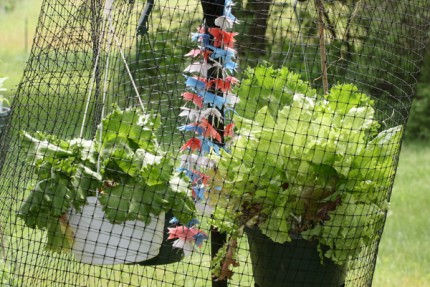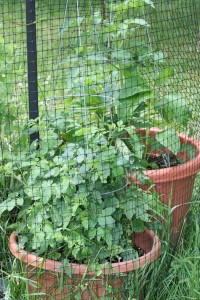
(Chelsea Update would like to thank Jennifer Fairfield, owner of The Garden Mill, for the information in this story. In case you missed it, part 1 ran yesterday.)
The diameter of the container matters, but not quite as much as the depth.
The best advice I can give for diameter is that your container should be close to the same diameter as depth – it doesn’t have to be exactly the same, but a really deep narrow container isn’t going to allow your tomato plant to do as well as a deep wide one will.
Most plant’s roots need to spread both deep and wide – though for things like carrots, that is obviously not as big a problem.
The next question I get is often about how much of each thing to put in a pot. I only plant one of the larger plants in each container – broccoli, cabbage, cauliflower, melons, squash, and tomatoes all go one to a pot.
Corn, though it needs a deep container, doesn’t so much need wide – because it’s tall and somewhat thin – so you could fit more than one plant in a large-diameter pot. My recommendation is to go for a 20” diameter pot and put three plants in it.
For smaller plants, the number you can put in a pot depends on the diameter – use the spacing information on the seed packet to guide you. And don’t be afraid to mix-and-match.

You can plant carrots and radishes together in a pot, just like you can in a garden bed.
For annual flowers and foliage, you can crowd the pots a little more because you are only expecting to get one season’s growth out of them, they aren’t producing a crop, and being root-bound isn’t as big a concern.
When picking out flowers for containers, consider color. Cool colors, such as blue, purple, and green are soothing and make small spaces seem larger. Warm colors like red, orange, and yellow are stimulating and appear to fill large spaces.
Planting combinations of colors that are next to each other on the color wheel, or analogous colors, can present one mood.
Complimentary colors – those on opposite sides of the color wheel – make bold and dramatic statements.
Monochromatic plantings can appear harmonious, while polychromatic plantings are more like Mother Nature’s own designs.
Also be sure to use the concept of “thriller, spiller, and filler” when planting your flowers and foliage.
Thriller is tall and showy – grasses such as bloodgrass, spike, purple fountain grass, and large plants like calla and canna lily, elephant ear, banana.
Spiller flows over the edges of your pot – bacopa, some begonias, ivy, fuschia, nasturtium, and sweet potato vine are good examples.
Fillers fill in the rest of the container. Good options include coral bells, dusty miller, hardy geranium, lobelia, pansy, and sedum.
Some additional considerations for growing in containers:
When you are planting in a pot, don’t use garden soil – it is too heavy and dries out too quickly. Use a lightweight soil that will retain moisture – a good all-purpose potting soil works well.
Be sure to water frequently – containers dry out quickly, especially in hot and windy weather.
Make sure your container has good drainage. Too much water is not a good thing – it can kill a plant even more quickly than too little water.
Don’t forget to fertilize. Because you are watering regularly, fertilizer gets flushed out of containers, and the plant doesn’t have anywhere else to get food.
Happy Gardening.














